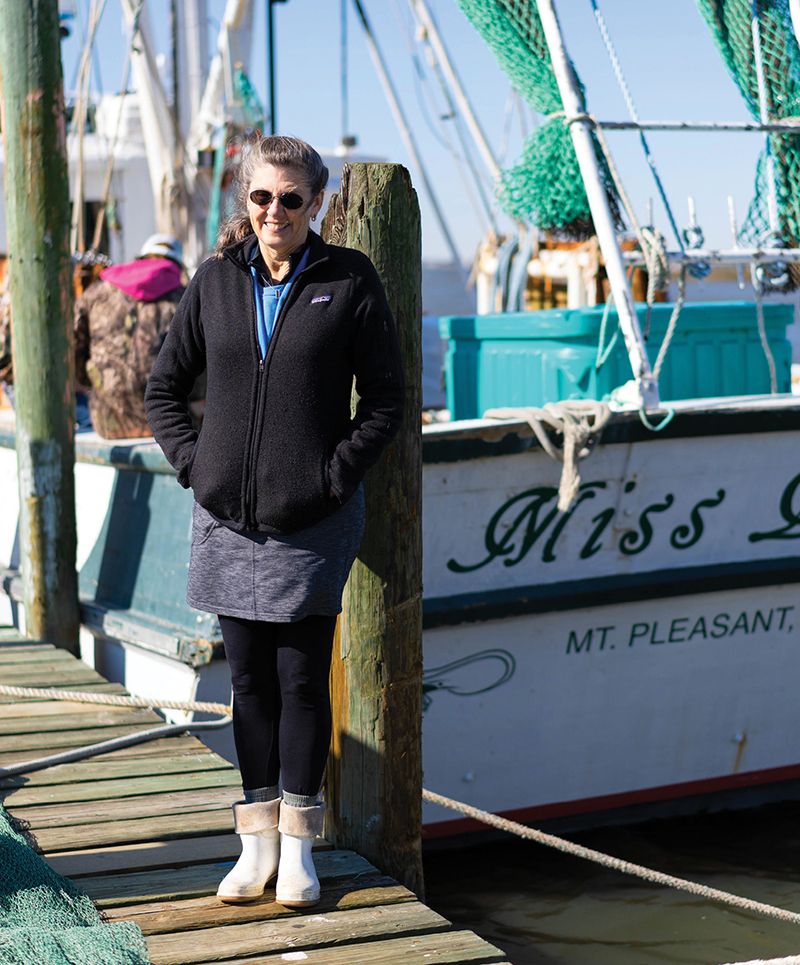As the Lowcountry heads into shrimp season, we catch up with the unlikely fishing industry advocate at the helm of Tarvin Seafood

CM: How did your family get into the shrimping business?
CT: It all started when our son, who was then 12 years old, began working with longtime Charleston shrimper Wayne Magwood. I would take Vasa down to the dock at 4 a.m. and pick him up that evening. In 2011, when Vasa was 19, my husband and I bought him a boat. We viewed the Miss Paula as his college tuition. He caught about 3,000 pounds of shrimp in the first two days.
CM: What was your biggest challenge when learning the ropes?
CT: Neither my husband nor I come from fishing families, so other fisherman initially saw us as less capable. We were criticized for doing almost everything differently—sorting by size, pulling out anything a chef wouldn’t want, delivering for free—but then we were copied. I guess that means we’ve done something right.
CM: What is the core belief behind Tarvin Seafood?
CT: I’m a big believer in the management of resources rather than just letting people fish until there’s nothing left and in paying a high enough price for shrimp to make it worthwhile for the boats to go out. Shrimp is a fairly successfully managed species, but Charleston is becoming a less productive fishery partly because its development is impacting the marshes and estuaries.
CM: How does that affect business?
CT: The supply has been declining for 20 years, mostly because the waters are warming and shrimp can only survive in a certain temperature range. Usually, we would have about six weeks to catch brown shrimp, but last summer, it was six days. The warming waters mean more shrimp are available farther north. Fortunately, support for buying locally from farmers and fishermen is quite strong. Among our strongest advocates are restaurants, who truly put their money where their mouths are.
CM: How did you become an important purveyor for so many local chefs?
CT: We were initially located at the Geechee Dock and learned a lot from Abundant Seafood’s Mark Marhefka. With his guidance, we realized the best approach was to establish long-term relationships with the restaurants.
CM: Is it difficult being a female in the male-dominated fishing industry?
CT: I grew up with brothers, so I have tough skin. There’s definitely a prejudice against women in fishing but more so on the boats than at the dock. I try to support the few women who work on the boats—one works aboard Miss Paula.
CM: Chef Emily Hahn (of Bravo Top Chef fame) recently joined your staff. What is her role?
CT: We delivered to Emily when she was the chef first at Warehouse and then The Getaway. I used to joke about sending people to the dock to learn what hard work was all about. After The Getaway closed, she came to me asking for just that. She’s a deckhand, works on the business side, and handles our social media.
CM: What does the future hold for Tarvin Seafood?
CT: We just signed a lease with the town of Mount Pleasant to run the Wando Dock, which is exciting, because we’ve never had true security in regards to where we tie up our boats. We’re in the process of building a new ice plant and trying to become a low-impact dock that can handle the off-loading needs of the commercial fishing and shrimping community.